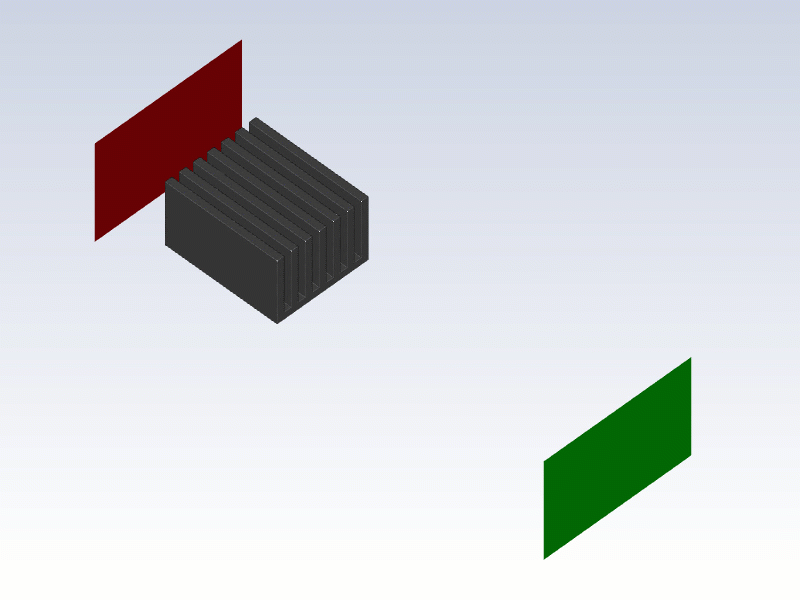Simulation Example - Cooling Electronics using a Heat Sink
Overview
Electronic components, such as chips and microprocessors generate heat, and proper thermal management plays an important role in improving their longevity and reliability. With the continuous size reduction of electronic components, engineers in this industry rely on designing heat sinks to reliably transport thermal power away from the electronics. Heat sinks are practically used in applications involving either natural or forced convection. Traditionally, heat sinks have several fins, which are thin surfaces extending from the heat sink base. These fins effectively enhance the heat transfer between its surface and the surrounding air by increasing the surface area available for heat transfer. Thermal power from the electronics is transported to these fins via conduction, and the surrounding air picks up this heat energy via convection. Typically, in desktops and laptops, there are axial fans or centrifugal blowers that force air onto the heat sinks. In these devices, energy is transported primarily via forced convection. The flowing cold air transfers heat away from the heat sink, which causes a rise in the air temperature. In certain high-power desktops, liquid cooling is employed to cool the microprocessors.
Objectives
This example simulates the forced convective cooling of a thermal heat sink to cool electronics. The heat sink assembly consists of a copper plate and an aluminum heat sink. In this model, 100 W of thermal power is applied to the copper plate surface. Cold air is forced over this heat sink, thereby removing thermal energy. The primary objective of this simulation is to predict the steady-state average temperature of this copper plate.
Setup
Download the Mesh file needed for setting up the simulation and the associated Case & Data files here. Follow the instructions below to set up this simulation in Ansys Fluent starting with the Mesh file. In case you face any issues setting up or running the simulation, refer to the corresponding initial and final Case and Data files.
Results and Discussion
Let's take a look at the results from this simulation and understand how a heat sink enhances cooling.


